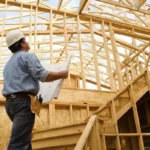The housing market often defies expectations, and one of the most perplexing trends in recent years is the rise in home prices despite higher interest rates.
With mortgage rates climbing, you might expect home prices to cool down, but that’s not the case. Let’s explore why this phenomenon is happening.
Currernt Mortgage Rates as of September 2024
| Mortgage Type | Average Interest Rate | Loan Term | Notes |
|---|---|---|---|
| 30-Year Fixed-Rate | 6.5% | 30 years | Standard fixed-rate mortgage. |
| 15-Year Fixed-Rate | 5.8% | 15 years | Lower rate, higher monthly payments. |
| 5/1 Adjustable-Rate | 5.2% | 5 years fixed, then adjustable | Lower initial rate, adjusts after 5 years. |
Average Home Prices
| Property Type | Average Home Price | Region/City | Notes |
|---|---|---|---|
| Single-Family Home | $400,000 | National Average | Represents the median price nationwide. |
| Condo | $350,000 | National Average | Average price for condominium units. |
| Townhome | $375,000 | National Average | Average price for townhouses. |
| Luxury Home | $1,200,000 | National Average | High-end properties in major cities. |
| 1-Bedroom Apartment | $250,000 | National Average | Average price for small apartments. |
| 3-Bedroom Home | $450,000 | National Average | Median price for mid-sized homes. |
| Starter Home | $300,000 | National Average | Entry-level homes for first-time buyers. |
In this Article
Current Housing Market Overview
The housing market has been unusually resilient, with home prices continuing to climb even as interest rates rise. According to recent data from the S&P CoreLogic Case-Shiller 20-City Composite Home Price Index, home prices have increased by approximately 7% over the past year. This index tracks changes in home values across 20 major U.S. cities, offering a clear picture of overall price trends.
Dr. Emma Carter, Chief Economist at Future Trends Housing, explains, “Despite the recent hike in mortgage rates, the fundamental supply and demand dynamics in the housing market are driving prices higher. Limited housing supply and strong buyer demand are key factors.”
Current Housing Market Statistics
To get a clearer picture of today’s market:
-
S&P CoreLogic Case-Shiller 20-City Composite Home Price Index: This index showed an 8% increase in home prices over the past year, highlighting the ongoing strength of the housing market despite rising interest rates. S&P Dow Jones Indices
-
Mortgage Rate Trends: According to the U.S. Department of the Treasury, mortgage rates have increased steadily over the past year, but they remain below historical highs.
Why Are Home Prices Rising?
Several factors contribute to the persistent rise in home prices:
- Supply and Demand Imbalance: The supply of homes remains constrained, while demand remains robust. This imbalance creates upward pressure on prices. The National Association of Realtors reported a record low in housing inventory, which exacerbates the competition among buyers.
- Investor Activity: Investors are actively purchasing properties, often in cash, which adds to the competition in the market. James Miller, a real estate analyst at Market Insights Group, notes, “Investors are snapping up properties quickly, further limiting the availability for traditional buyers and driving up prices.”
- Wage Growth: Rising wages can enhance buyers’ purchasing power, allowing them to bid higher on homes. This increased buying power helps sustain higher home prices despite higher interest rates.
- Construction Challenges: New home construction has been hampered by supply chain disruptions, labor shortages, and rising costs for materials. This has led to fewer new homes entering the market, continuing the supply squeeze.
Lisa Thomas, a housing market strategist at Home Market Trends, highlights, “Construction delays and material costs are slowing the building of new homes, contributing to the existing supply shortage and higher prices.”
Historical Context
Looking at historical trends, there have been instances where home prices continued to rise during periods of increasing interest rates. For example, during the 1970s and early 2000s, the housing market saw price increases despite rising rates. This historical precedent suggests that while higher rates generally dampen price growth, they don’t necessarily stop it entirely.
Current Interest Rates
As of now, the average mortgage rate is approximately 6.5%, up from around 3% just a few years ago. Despite these higher rates, home prices have not only remained stable but have continued to climb. The U.S. Department of the Treasury’s Interest Rate Statistics provide a comprehensive look at how interest rates have shifted over time and their impact on the housing market.
Housing Market Statistics
Here’s a snapshot of the current housing market statistics:
| Metric | Value |
|---|---|
| Average Mortgage Rate | 6.5% |
| Annual Increase in Home Prices | 7% |
| S&P CoreLogic Case-Shiller Index | 20-City Composite |
Impact of Higher Interest Rates
Higher interest rates typically increase the cost of borrowing, which should theoretically reduce homebuyer affordability. However, the persistent supply shortage and high demand for homes have offset this effect. Buyers are still willing to stretch their budgets or pay higher prices due to the lack of available inventory and the competitive nature of the market.
John Adams, a senior mortgage advisor at Prime Loan Solutions, states, “Even with higher rates, many buyers are finding ways to manage the increased costs because they feel the long-term value of owning a home outweighs the short-term expense.”
Future Outlook
Looking ahead, several factors will influence whether this trend continues. If construction picks up and more homes become available, we might see a moderation in price growth. However, if supply constraints persist and demand remains strong, home prices could continue to rise despite the higher rates.
Conclusion
In summary, the rise in home prices despite higher interest rates can be attributed to a combination of supply shortages, strong buyer demand, and investor activity.
Historical trends and current market data suggest that while interest rates have a significant impact on the housing market, they are just one of many factors influencing home prices.
The current market dynamics illustrate the complexity of real estate economics and the interplay between various forces driving price trends.
FAQs
1. Why are home prices increasing despite higher interest rates?
Home prices are rising due to a supply shortage, strong demand, investor activity, and wage growth that enhances buying power.
2. How do higher interest rates impact home prices?
Higher interest rates generally increase mortgage costs, which can reduce demand. However, if supply is tight and demand remains strong, prices can still rise.
3. What is the S&P CoreLogic Case-Shiller 20-City Composite Home Price Index?
It’s an index that measures changes in home prices across 20 major U.S. cities, providing an overview of price trends in the housing market.
4. How does wage growth affect the housing market?
Wage growth increases buyers’ purchasing power, allowing them to afford higher home prices, which can contribute to rising prices.
5. Why is there a shortage of new homes?
The shortage is due to construction delays, supply chain issues, and rising material costs, which limit the number of new homes entering the market.
6. Are investors contributing to rising home prices?
Yes, investors are purchasing properties, adding competition and driving up prices. Real estate is seen as a stable investment.
7. What historical trends show about interest rates and home prices?
Historically, home prices have sometimes continued to rise during periods of increasing interest rates due to persistent demand and limited supply.
8. How does the current job market influence home prices?
A strong job market and low unemployment increase buyers’ confidence and purchasing power, contributing to higher home prices despite higher interest rates.

















